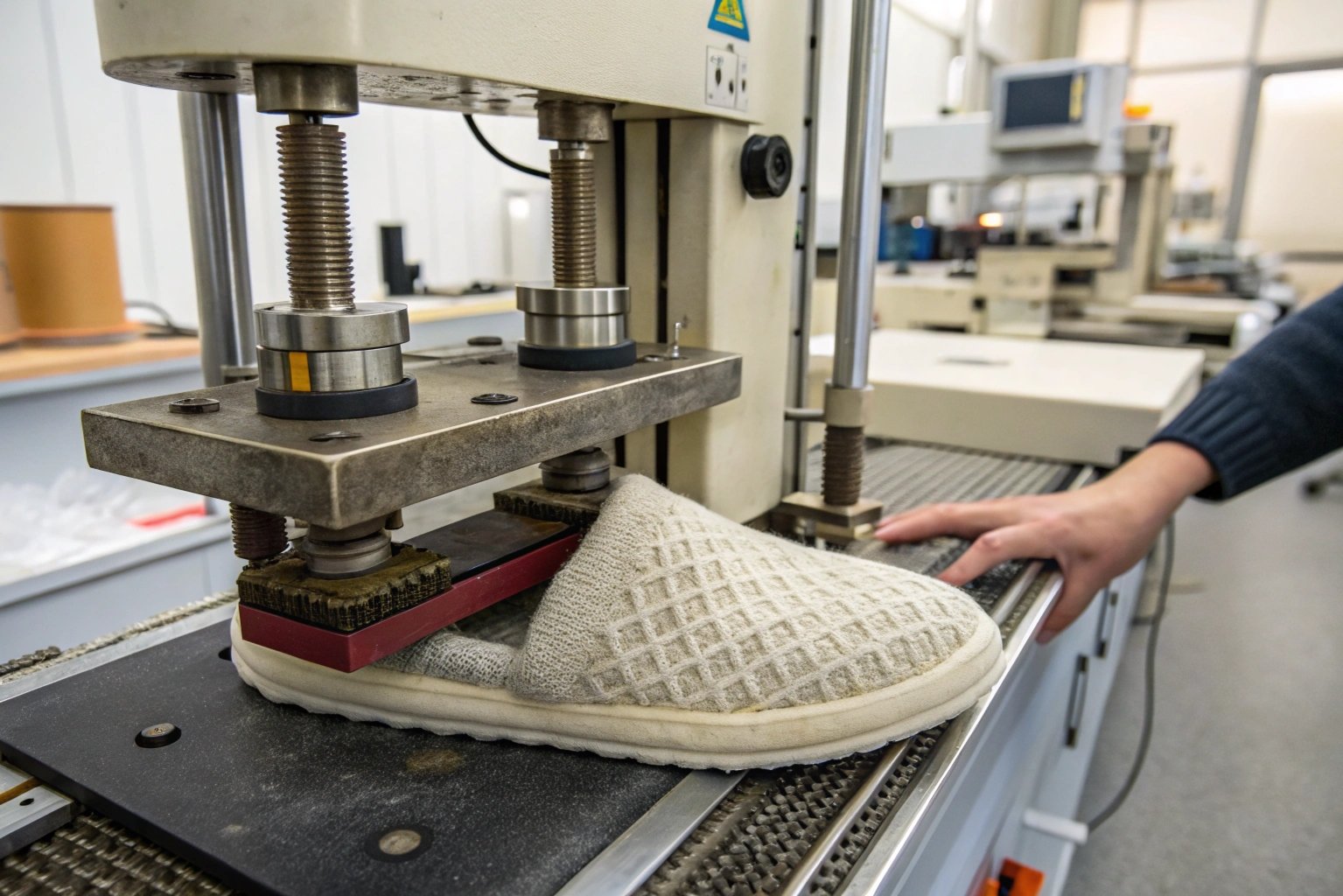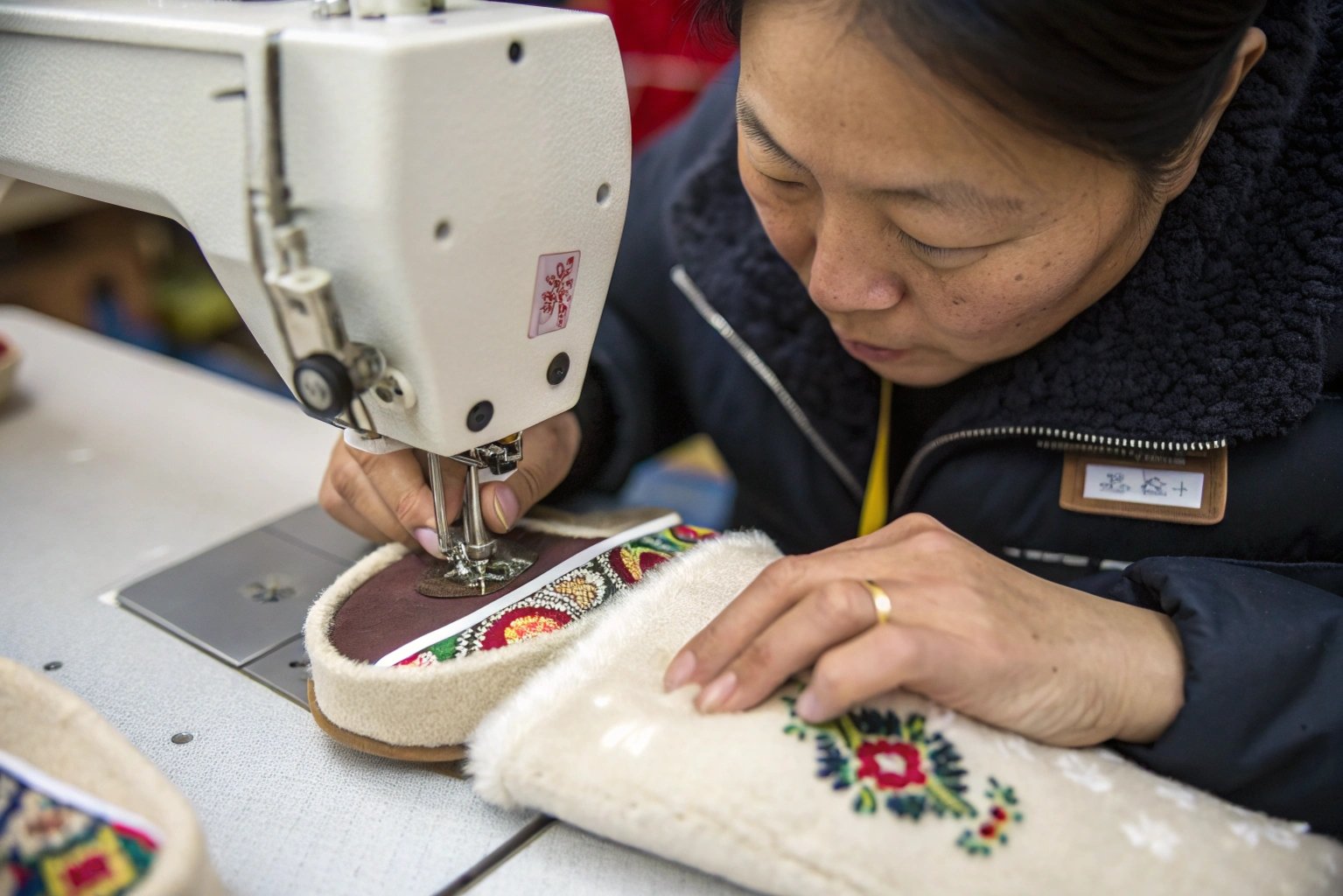Worried about your winter slippers losing their fluff and support? Don’t you wish they stayed comfy all season long?
Compression resilience in winter slippers is measured by how well they bounce back to their original shape after being squeezed, ensuring lasting comfort and support.

You might be wondering why this matters, and what exactly goes into testing for this important feature. Let’s find out more about it.
How is Compression Resilience Measured?
Worried about your winter slippers losing their fluff and support? Don’t you wish they stayed comfy all season long?
Compression resilience is typically measured using a compression testing machine, which applies a controlled force to the slipper material and measures its recovery.

As a slipper manufacturer, I’ve seen firsthand the importance of compression resilience. The standard test usually involves placing the slipper material between two flat plates of a compression testing machine. The machine applies a specific amount of pressure for a set time. Afterward, the pressure is released, and the material’s recovery is measured. We look at how much it returns to its original thickness or height. The higher the recovery percentage, the better the compression resilience. I’ve found that materials like memory foam and high-density sponges generally perform well in these tests. Also, things like temperature and humidity can affect the test results.
What Factors Affect Compression Resilience?
Are you curious about what makes some slippers keep their shape better than others? It’s not just magic!
Material type, density, and manufacturing techniques all influence how well a slipper retains its shape after compression.

In my experience, several factors impact compression resilience. Firstly, the type of material is crucial. Natural materials such as wool and down have a natural resilience, and even synthetic materials like high-density foam or special gels also offer good performance. Secondly, the density of the material matters. Denser materials tend to withstand compression better than less dense ones. Thirdly, the manufacturing process plays a role. For example, how the foam is processed to what kind of stitching structure being used will affect the resilience. Lastly, thickness also matters. The thicker the foam, the better resilience it provides
Here’s a table summarizing these factors:
| Factor | Impact on Compression Resilience |
|---|---|
| Material Type | Certain materials (e.g., memory foam) are naturally more resilient |
| Material Density | Higher density generally leads to better resilience |
| Manufacturing Process | Proper techniques enhance material’s ability to bounce back |
| Thickness | More thickness contributes to better compression resistance |
How Do These Standards Benefit Customers?
Want slippers that feel great day after day? These standards are there to help you.
These standards ensure that slippers maintain their comfort and support over time, providing long-lasting value for customers.

From a customer’s perspective, compression resilience standards mean a lot. They guarantee that the slippers will remain comfortable even after repeated use. This is because the slippers retain their cushioning and support. This also affects the slipper’s lifespan. Slippers that maintain their shape last longer and provide better value for money. I’ve seen many customers come back to us because our slippers hold up well over time. In contrast, slippers with poor compression resilience quickly flatten out and lose their comfort, leading to disappointment. By adhering to these standards, we ensure customer satisfaction and build trust in our brand.
Conclusion
Compression resilience testing ensures your winter slippers stay comfy and supportive, offering long-lasting comfort and value.

